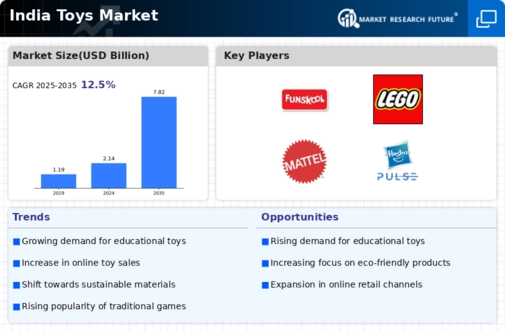The rise of e-commerce is driving market growth
The toy market in India has experienced a substantial transformation in consumer behavior due to the rise and expansion of e-commerce. Multiple factors, including technological advancements, shifting consumer preferences, and the convenience provided by online purchasing platforms, have a significant impact on this trend. Technological advancements have significantly influenced the toy retail industry in India. The proliferation of smartphones, in conjunction with enhanced internet connectivity and the provision of secure online payment alternatives, has contributed to the expansion of electronic commerce platforms.
Consumers can now more easily peruse an extensive selection of toys, compare prices, read reviews, and make well-informed purchasing decisions from the convenience of their residences due to these technological developments. In addition, the incorporation of virtual reality (VR) and augmented reality (AR) technologies into e-commerce platforms has significantly improved the customer purchasing experience. Virtual reality (VR) and augmented reality (AR) Distribution Channels enable users to virtually perceive and engage with toy products, thereby enhancing user involvement and mitigating the unpredictability typically associated with online transactions.
Although the expansion of online toy retailing offers participants in the Indian market a multitude of prospects, it also presents a number of obstacles. A notable obstacle pertains to the matter of counterfeit merchandise and apprehensions regarding the safety of products linked to e-commerce platforms. In order to tackle this obstacle, e-commerce merchants must establish collaborative relationships with reputable suppliers, enforce rigorous quality control protocols, and educate customers regarding the significance of acquiring products from reputable vendors. In addition, the swift proliferation of e-commerce for toys has heightened rivalry among participants, resulting in price conflicts and marginal demands.
Online retailers must distinguish themselves through product quality, customer service, and innovative marketing strategies in order to remain competitive. Technological advancements, shifting consumer preferences, and the expansion of online retail platforms are all potential drivers of the continued expansion of online toy merchandising in India over the next few years. By capitalizing on these emerging patterns and effectively tackling significant obstacles, participants in the toy industry in India can exploit the immense prospects offered by the digital retail environment.














